Why Do I Need a Crown
What is a crown?
A crown is a cover or “cap” your dentist can put on a tooth. The crown restores the tooth to its normal shape, size and function. The purpose of a crown is to make the tooth stronger or improve the way it looks.
Why do I need a crown?
You may need a crown if you:
- have a cavity that is too large for a filling
- have a missing tooth and need a bridge
- need to cover a dental implant
- have a tooth that is cracked, worn down or otherwise weakened
- have had root canal treatment—the crown will protect the restored tooth
- want to cover a discolored or badly shaped tooth and improve your smile!
Crown Used to Replace a Filling
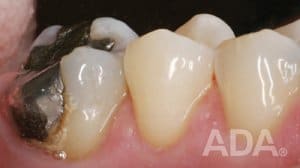
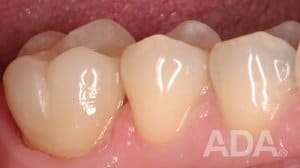
“Crown Used to Replace a Filling” photos courtesy of John R. Nosti, DMD, FAGD, FACE, FACOI, SmileDesignNYC.com.
What is it made from?
Crowns are made from several types of materials. Metal alloys, ceramics, porcelain, composite resin, or combinations of these materials may be used. In the process of making a crown, the material often is colored to blend in with your natural teeth.
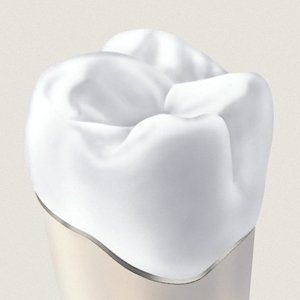
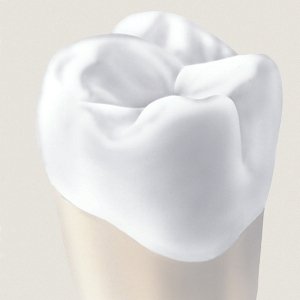
Your dentist wants to create a crown that looks natural and fits comfortably in your mouth. To decide on the material for your crown, your dentist will consider the tooth location, the position of the gum tissue, the patient’s preference, the amount of tooth that shows when you smile, the color or shade of the tooth, and the function of the tooth.
How is a crown placed?
Several steps are involved, and two dental visits are generally needed to complete the treatment.
- The dentist prepares the tooth by removing its outer portion so the crown will fit. Any decay is also removed. If additional tooth structure is needed to support the crown, the dentist may build up the core of the tooth.
- An impression is made to provide an exact model for the crown.
- You will get a temporary crown while you wait for the permanent crown to be ready—usually less than two weeks. While you have the temporary crown, this tooth may be sensitive to hot and cold. Also, avoid chewing gum or sticky foods during this time.
- The dentist or a laboratory technician then uses the model to help make the crown.
- When the new crown is ready, the dentist places it in your mouth and makes the necessary adjustments. When you and your dentist are satisfied with how it looks and feels, the crown is cemented in place.
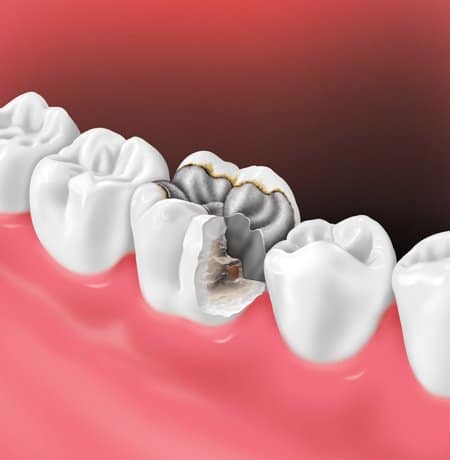
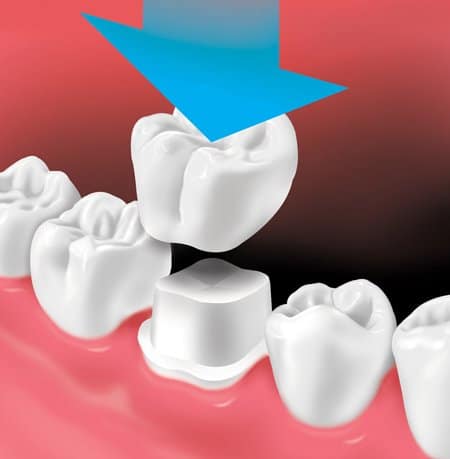
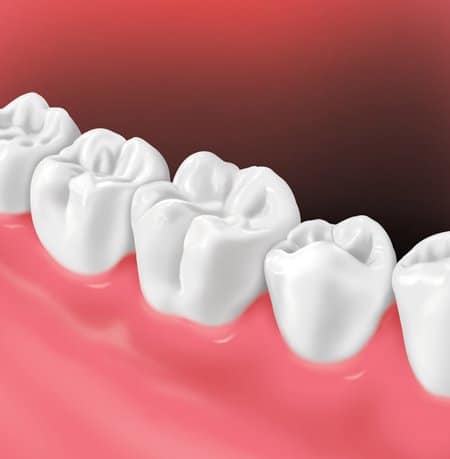
Caring for your teeth
To prevent damage to a crown, there are a few things you can do:

- Brush twice a day and floss once a day to remove plaque, a sticky film of bacteria. Look for oral care products that have the ADA Seal of Acceptance. Products that display the Seal have met the American Dental Association’s standards for safety and effectiveness.
- Avoid chewing hard foods, ice or other hard objects, such as pencils. This is especially important for tooth-colored crowns.
- Be sure to see your dentist for regular exams and professional teeth cleanings.
Produced in cooperation with the American College of Prosthodontists “Crown Used to Replace a Filling” – photos courtesy of John R. Nosti, DMD, FAGD, FACE, www.cosmeticdentistryofsj.com.
Our Vision
We are dedicated to providing the highest level of service and quality to our patient community by cultivating strong relationships, communicating thoughtful treatment solutions, and providing an enjoyable atmosphere, we can empower our patients to take ownership of their oral health.
We are committed to researching and offering state-of-the-art dental solutions in order to deliver the most advanced treatment options to our patients.


